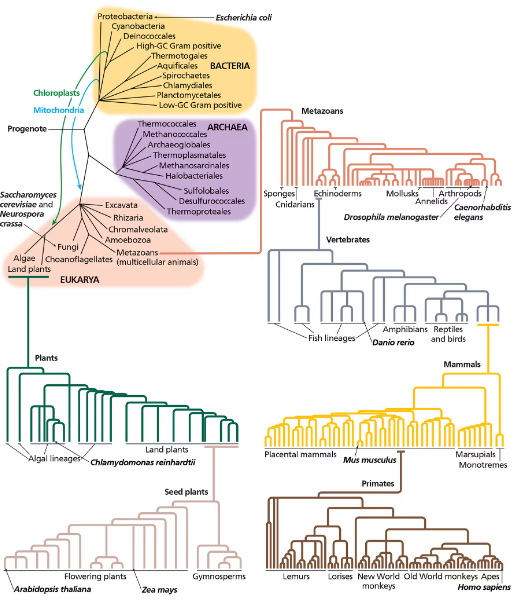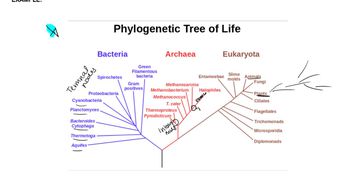SDS-PAGE is a method used to separate proteins by which of the following characteristics?
Table of contents
- 1. Introduction to Genetics51m
- 2. Mendel's Laws of Inheritance3h 37m
- 3. Extensions to Mendelian Inheritance2h 41m
- 4. Genetic Mapping and Linkage2h 28m
- 5. Genetics of Bacteria and Viruses1h 21m
- 6. Chromosomal Variation1h 48m
- 7. DNA and Chromosome Structure56m
- 8. DNA Replication1h 10m
- 9. Mitosis and Meiosis1h 34m
- 10. Transcription1h 0m
- 11. Translation58m
- 12. Gene Regulation in Prokaryotes1h 19m
- 13. Gene Regulation in Eukaryotes44m
- 14. Genetic Control of Development44m
- 15. Genomes and Genomics1h 50m
- 16. Transposable Elements47m
- 17. Mutation, Repair, and Recombination1h 6m
- 18. Molecular Genetic Tools19m
- 19. Cancer Genetics29m
- 20. Quantitative Genetics1h 26m
- 21. Population Genetics50m
- 22. Evolutionary Genetics29m
15. Genomes and Genomics
Proteomics
Problem 10
Textbook Question
Based on the tree of life in the following figure (Figure 16.12), would you expect human proteins to be more similar to fungal proteins or to plant proteins? Would you expect plant proteins to be more similar to fungal proteins or to human proteins?

 Verified step by step guidance
Verified step by step guidance1
Examine the tree of life in Figure 16.12, which illustrates evolutionary relationships among organisms. Identify the placement of humans, fungi, and plants on the tree.
Understand that organisms closer to each other on the tree of life share a more recent common ancestor, which implies greater genetic and protein similarity.
Note that humans and fungi are both part of the Opisthokonta clade, indicating a closer evolutionary relationship compared to plants, which belong to a separate clade (Archaeplastida). This suggests human proteins are more similar to fungal proteins than to plant proteins.
Compare the evolutionary relationship between plants and fungi. Since fungi and plants are in separate clades, their proteins are less similar compared to the relationship between plants and humans, which are even more distantly related.
Conclude that protein similarity is determined by evolutionary proximity, and organisms within the same clade or closer branches of the tree of life will have more similar proteins due to shared ancestry.
 Verified video answer for a similar problem:
Verified video answer for a similar problem:This video solution was recommended by our tutors as helpful for the problem above
Video duration:
2mPlay a video:
Was this helpful?
Key Concepts
Here are the essential concepts you must grasp in order to answer the question correctly.
Phylogenetic Tree
A phylogenetic tree is a diagram that represents evolutionary relationships among various biological species based on similarities and differences in their genetic characteristics. It illustrates how species are related through common ancestry, allowing for predictions about the genetic similarities between organisms. Understanding the tree of life helps in determining which organisms share more recent common ancestors, thus influencing protein similarity.
Recommended video:
Guided course

Phylogenetic Trees
Protein Homology
Protein homology refers to the similarity in protein sequences that arises from shared ancestry. Proteins that are homologous are likely to have similar structures and functions due to their evolutionary origins. By analyzing protein homology, one can infer evolutionary relationships and predict functional similarities between proteins from different organisms, such as humans, fungi, and plants.
Recommended video:
Guided course

Proteins
Common Ancestry
Common ancestry is the concept that different species share a common ancestor from which they have evolved over time. This principle is fundamental in evolutionary biology and helps explain the genetic and phenotypic similarities observed among species. In the context of the question, understanding common ancestry allows for predictions about the degree of similarity between human, fungal, and plant proteins based on their evolutionary paths.
Recommended video:
Guided course

Phylogenetic Trees
Related Videos
Related Practice
Multiple Choice
511
views
1
rank


